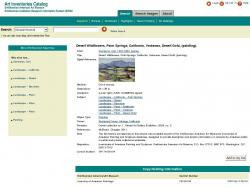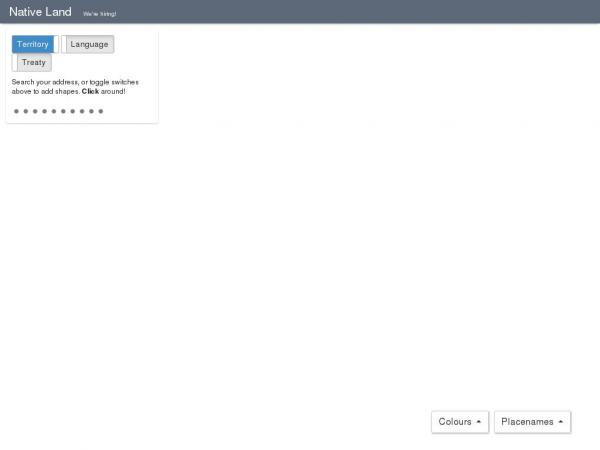Kate Harris
Social Studies teacher
Pittsburgh CAPA
Middle School (13 to 15 years old), High School (16 to 18 years old)
Teacher/Educator
Language Arts And English, Civics, Literature, Cultures, Economics, Social Studies, Geography, Writing, US History, Arts, Other
I'm a history-lover, art fan, and bookworm. I taught high school history (U.S. History and World Religions) for ten years in North Carolina, teach currently in Pittsburgh, PA, and am working to help teachers make the most of this new resource!
Kate Harris's collections
Droughts and Dust Bowls
This is a collection of teaching resources about droughts and the Dust Bowl. While it is mainly focused on 20th century American history, there are also some links to articles that cover droughts more broadly across time and cultures. I have included some artists (Woody Guthrie, John Steinbeck, nda Dorothea Lange) who recorded the effects of the Dust Bowl on American society. There is also a selection of lesson plans and videos that explain how farming practices and environmental changes lead to droughts, and how people have responded by changing practices and developing new technologies. <br />
<br />
Resources in this collection might be used in Language Arts, Social Studies, or Science classrooms. Questions to consider might include:<br />
-How do people impact their environment?<br />
-How do changes to the environment impact peoples' lives?<br />
-How did government and society respond to the disaster of the Dust Bowl? <br />
-What is government's responsibility in times of natural disaster?<br />
-What steps can be taken to prevent future environmental disasters?<br />
<br />
 Kate Harris
Kate Harris
27
California: A Land of Opportunity?
<p>As we continue to read "The Grapes of Wrath," I'd like you to consider the way in which California represents the "American Dream." How has this changed over time? Has California always lived up to its image? Consider who has access to dreams and opportunities in California at any given time. </p><p>After you look through the collection, choose one of the following assignments to complete and submit your assignment using the "Submit File" option that is part of the last resource. Hint: you may want to take notes and/or save images as you are browsing the resources here. </p><p>Possible assignments:</p><p>1) Create a timeline of "Opportunities Gained and Lost" in California using at least 8 images from the collection. For each image, identify who is gaining or losing an opportunity in this instance, and what kind of opportunity is being referenced. Remember this is a timeline and will need to be in chronological order by year. Complete your timeline with an image that you have found (from the Learning Lab or an outside resource) that represents California today.</p><p>2) Would you argue that "California is a land of dreams"? How could you change that statement to make it more accurate? Write an essay defending your statement that references at least 4 images from this collection. You may want to do some additional research to supplement your essay.</p><p>Tags: point of view, change, continuity, cause, effect, Dust Bowl, drought, migrant, migration, chronology, Steinbeck</p>
 Kate Harris
Kate Harris
34
Modern Migrations
This collection offers teaching resources that provide context for today's modern refugee crisis and the ethical and political questions raised by the migration of so many people at this time. <br /><br />
The resources in this collection ask students to consider what it means to migrate, the choice (or lack thereof) that is involved in moving from one place to another, and how the word "migrant" differs from "refugee." As students examine different examples or objects in this collection, ask them to consider the reasons behind the migration and how these particular migrants are percieved. Suggested questions for discussion are embedded on the information tabs throughout. <br /><br />
 Kate Harris
Kate Harris
12
Origin Stories from Around the World
<p> Creation myths, or origin stories, tell us what a culture believes about how humans came to be. They can also tell us much about what that culture values. These are often religious or spiritual explanations for human life. </p><p>Choose one of origin stories on this page to focus on. Read, watch, or listen to the story. Then, create a visual that illustrates a scene in the story that you think is revealing about that culture's values. Finally, write a paragraph summarizing what you learned about that culture based on their origin story.</p><p>To recap:</p><p>1. Read/watch listen.</p><p>2. Create a visual of 1 scene in the story. </p><p>3. Write a paragraph summarizing what you learned about that culture based on their origin story. <br /></p>
 Kate Harris
Kate Harris
8
Westinghouse: The Man and the Companies
This is a collection of teaching resources available on the topic of George Westinghouse as well as Westinghouse Electric Company (founded 1886) and its spinoffs (including the broadcasting company and nuclear energy company).
Fun fact: During the 20th century, Westinghouse engineers and scientists were granted more than 28,000 US government patents, the third most of any company (https://en.wikipedia.org/wiki/Westinghouse_Electric_Company#cite_note-2009profile-14)
 Kate Harris
Kate Harris
15
Ancient Egypt: Sarcophaguses and Coffins
This is a collection of sarcophaguses and coffins from Ancient Egypt. The sarcophagus refers to the outer layer of protection for an important mummy, and would generally be carved or painted with images representing the deceased person. As you look through the collection, notice the difference between the sarcophaguses and coffins and pay attention to the kinds of images you see. What are common features that you might find on any sarcophagus? What kinds of things are different depending on who it is that is buried?
 Kate Harris
Kate Harris
6
Thanksgiving--A Reflection of a Nation
A learning resource for students about Thanksgiving. The images in this collection are different portrayals of the United States holiday of Thanksgiving. They are grouped in order of publication from 1863 to 1994. As you look through them and complete the activities, think about these three key questions:<br />
-How does the context in which the image is produced affect the result? Meaning, how does what is happening during the time period affect what kind of picture of Thanksgiving we see?<br />
-What do the images say about our national identity: who is a welcome part of the United States? What do we celebrate in this country?<br />
-Whose version of the Thanksgiving story is being told in these images?
 Kate Harris
Kate Harris
15






